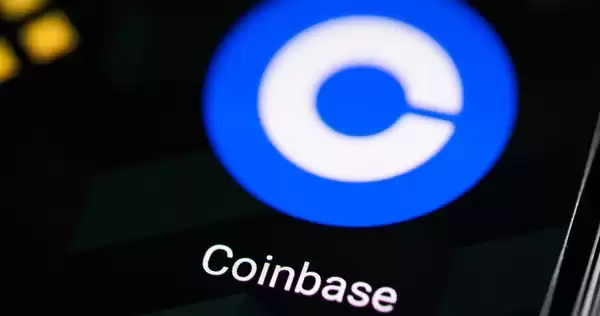-
 bitcoin
bitcoin $122288.232522 USD
0.16% -
 ethereum
ethereum $4480.662914 USD
-0.22% -
 xrp
xrp $2.962747 USD
-2.32% -
 tether
tether $1.000120 USD
-0.05% -
 bnb
bnb $1145.654223 USD
-2.07% -
 solana
solana $227.105217 USD
-1.67% -
 usd-coin
usd-coin $0.999548 USD
-0.02% -
 dogecoin
dogecoin $0.250875 USD
-2.04% -
 tron
tron $0.340654 USD
-0.49% -
 cardano
cardano $0.837968 USD
-2.52% -
 hyperliquid
hyperliquid $48.960449 USD
0.06% -
 chainlink
chainlink $22.049280 USD
-1.33% -
 ethena-usde
ethena-usde $1.000404 USD
0.02% -
 sui
sui $3.586212 USD
0.20% -
 avalanche
avalanche $29.894916 USD
-4.18%
How to read the K-line of a Coinbase contract
Candlestick charts, represented by four key components (open, close, high, low), provide valuable insights into market trends and trading opportunities, particularly when combined with technical indicators like moving averages, RSI, and Bollinger Bands.
Nov 14, 2024 at 03:38 pm

Candlestick charts are a widely used technical analysis tool to visualize price movements over time. They provide traders with valuable insights into market trends, support and resistance levels, and potential trading opportunities. This comprehensive guide will delve into the intricacies of reading K-line candlestick charts for Coinbase contracts, empowering traders with the knowledge to make informed trading decisions.
Step 1: Identifying Candlestick ComponentsEach candlestick consists of four key components:
- Open Price: The price at which the asset opened during the trading period.
- Close Price: The price at which the asset closed during the trading period.
- High Price: The highest price reached during the trading period.
- Low Price: The lowest price reached during the trading period.
These components are visually represented in the candlestick as follows:
- A rectangular box called the "body" indicates the difference between the open and close prices.
- Thin vertical lines extending from the top and bottom of the body are called "wicks" or "tails." These wicks represent the highest and lowest prices reached during the trading period.
Bullish candlesticks indicate upward price momentum and are characterized by a hollow or colored body with short or nonexistent wicks.
- Green Candle: A green candle with a hollow body represents an uptrend and closes higher than it opened. The longer the green candle, the stronger the bullish momentum.
- Marubozu: A candlestick with a filled body without any wicks indicates a strong trend. If the body is green, it represents a bullish Marubozu, while a red Marubozu signifies a bearish trend.
Bearish candlesticks, on the other hand, represent downward price movement and are characterized by a filled or colored body with long wicks.
- Red Candle: A red candle with a filled body represents a downtrend and closes lower than it opened. The longer the red candle, the stronger the bearish momentum.
- Bearish Engulfing: A candlestick pattern where a large red candle completely engulfs a smaller candlestick, indicating a reversal from an uptrend to a downtrend.
Candlestick patterns are specific combinations of candlesticks that provide traders with valuable trading insights. Some common candlestick patterns include:
- Hammer: A candlestick with a short lower wick, no upper wick, and a body located in the lower half of the candlestick. It suggests a reversal from a downtrend to an uptrend.
- Inverted Hammer: Similar to a hammer, but with a short upper wick, a body located in the upper half of the candlestick, and no lower wick. It suggests a potential reversal from an uptrend to a downtrend.
- Doji: A candlestick with very short or nonexistent wicks and a body that is almost nonexistent. It represents indecision in the market and its color can provide additional context (e.g., green Doji in an uptrend could indicate a pause).
Combining candlestick analysis with technical indicators can enhance trading strategies.
- Moving Averages: An indicator that calculates the average price over a specified period (e.g., 50-day moving average). Traders use moving averages to identify trends and support and resistance levels.
- Relative Strength Index (RSI): An indicator that measures the strength of a trend and identifies overbought or oversold conditions. Traders use RSI to assess market momentum.
- Bollinger Bands: An indicator that creates upper and lower bands based on volatility. Traders use Bollinger Bands to identify potential areas of breakout and consolidation.
Candlesticks can also assist traders in managing risk and setting stop-loss orders.
- Support and Resistance Levels: Candlesticks help identify areas where price tends to bounce or reverse. Traders can set stop-loss orders just below support levels or just above resistance levels.
- Trend Confirmation: Candlestick patterns can confirm or reverse existing trends. Traders can use this information to determine whether to enter or exit trades.
Disclaimer:info@kdj.com
The information provided is not trading advice. kdj.com does not assume any responsibility for any investments made based on the information provided in this article. Cryptocurrencies are highly volatile and it is highly recommended that you invest with caution after thorough research!
If you believe that the content used on this website infringes your copyright, please contact us immediately (info@kdj.com) and we will delete it promptly.
- BlockDAG, DOGE, HYPE Sponsorship: Crypto Trends Shaping 2025
- 2025-10-01 00:25:13
- Deutsche Börse and Circle: A StableCoin Adoption Powerhouse in Europe
- 2025-10-01 00:25:13
- BlockDAG's Presale Buzz: Is It the Crypto to Watch in October 2025?
- 2025-10-01 00:30:13
- Bitcoin, Crypto, and IQ: When Genius Meets Digital Gold?
- 2025-10-01 00:30:13
- Stablecoins, American Innovation, and Wallet Tokens: The Next Frontier
- 2025-10-01 00:35:12
- NBU, Coins, and Crypto in Ukraine: A New Yorker's Take
- 2025-10-01 00:45:14
Related knowledge

What is the difference between futures and perpetual contracts for Bitcoin?
Oct 02,2025 at 11:54pm
Understanding Bitcoin Futures Contracts1. Bitcoin futures are derivative instruments that allow traders to speculate on the future price of Bitcoin at...

What is the best time to trade PEPE contracts?
Oct 03,2025 at 11:54am
Understanding PEPE Contract Volatility1. PEPE contracts exhibit extreme price fluctuations due to their meme-based nature and low market cap. Trading ...

What are the common mistakes to avoid with Bitcoincoin contracts?
Oct 03,2025 at 08:54am
Emerging Trends in the Cryptocurrency Market1. Decentralized finance (DeFi) platforms continue to expand their influence across the blockchain ecosyst...

What is the maintenance margin for Bitcoin contracts?
Oct 02,2025 at 01:36am
Decentralized Exchanges Gain Momentum in 20241. Decentralized exchanges (DEXs) have seen a significant rise in trading volume, surpassing centralized ...

How to use technical analysis for trading XRP contracts?
Oct 03,2025 at 01:18pm
Understanding Price Patterns in XRP Futures1. Identifying chart patterns such as triangles, head and shoulders, and double tops or bottoms can provide...

What does "longing" PEPE contracts mean?
Oct 03,2025 at 11:54pm
Understanding Decentralized Exchanges in the Crypto Ecosystem1. Decentralized exchanges (DEXs) operate without a central authority, allowing users to ...

What is the difference between futures and perpetual contracts for Bitcoin?
Oct 02,2025 at 11:54pm
Understanding Bitcoin Futures Contracts1. Bitcoin futures are derivative instruments that allow traders to speculate on the future price of Bitcoin at...

What is the best time to trade PEPE contracts?
Oct 03,2025 at 11:54am
Understanding PEPE Contract Volatility1. PEPE contracts exhibit extreme price fluctuations due to their meme-based nature and low market cap. Trading ...

What are the common mistakes to avoid with Bitcoincoin contracts?
Oct 03,2025 at 08:54am
Emerging Trends in the Cryptocurrency Market1. Decentralized finance (DeFi) platforms continue to expand their influence across the blockchain ecosyst...

What is the maintenance margin for Bitcoin contracts?
Oct 02,2025 at 01:36am
Decentralized Exchanges Gain Momentum in 20241. Decentralized exchanges (DEXs) have seen a significant rise in trading volume, surpassing centralized ...

How to use technical analysis for trading XRP contracts?
Oct 03,2025 at 01:18pm
Understanding Price Patterns in XRP Futures1. Identifying chart patterns such as triangles, head and shoulders, and double tops or bottoms can provide...

What does "longing" PEPE contracts mean?
Oct 03,2025 at 11:54pm
Understanding Decentralized Exchanges in the Crypto Ecosystem1. Decentralized exchanges (DEXs) operate without a central authority, allowing users to ...
See all articles










































































